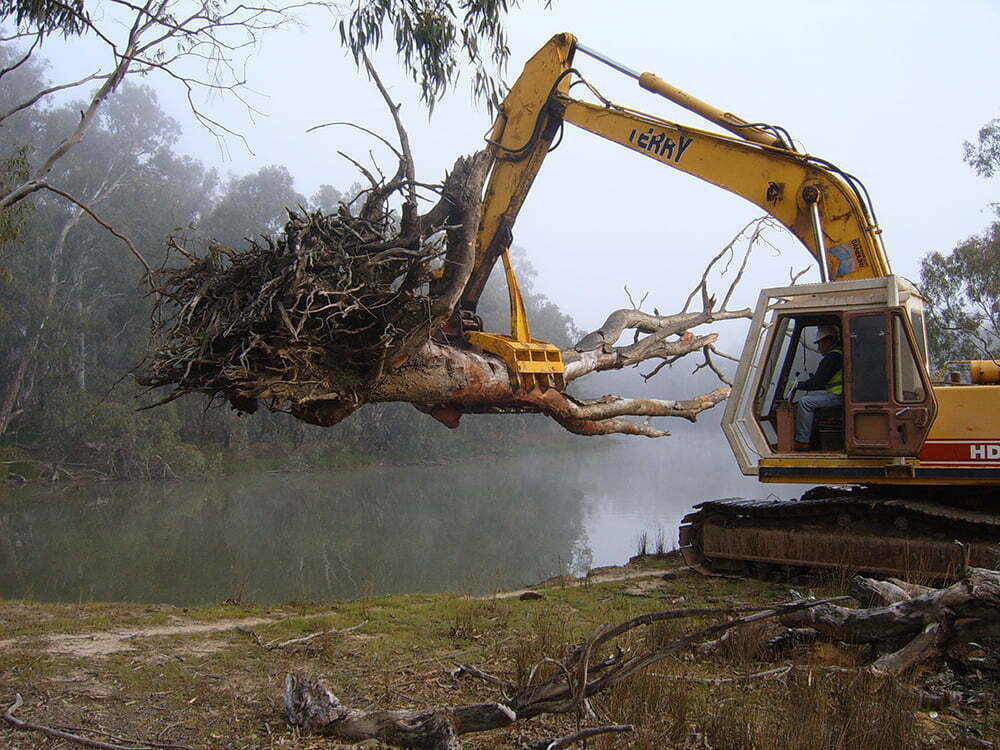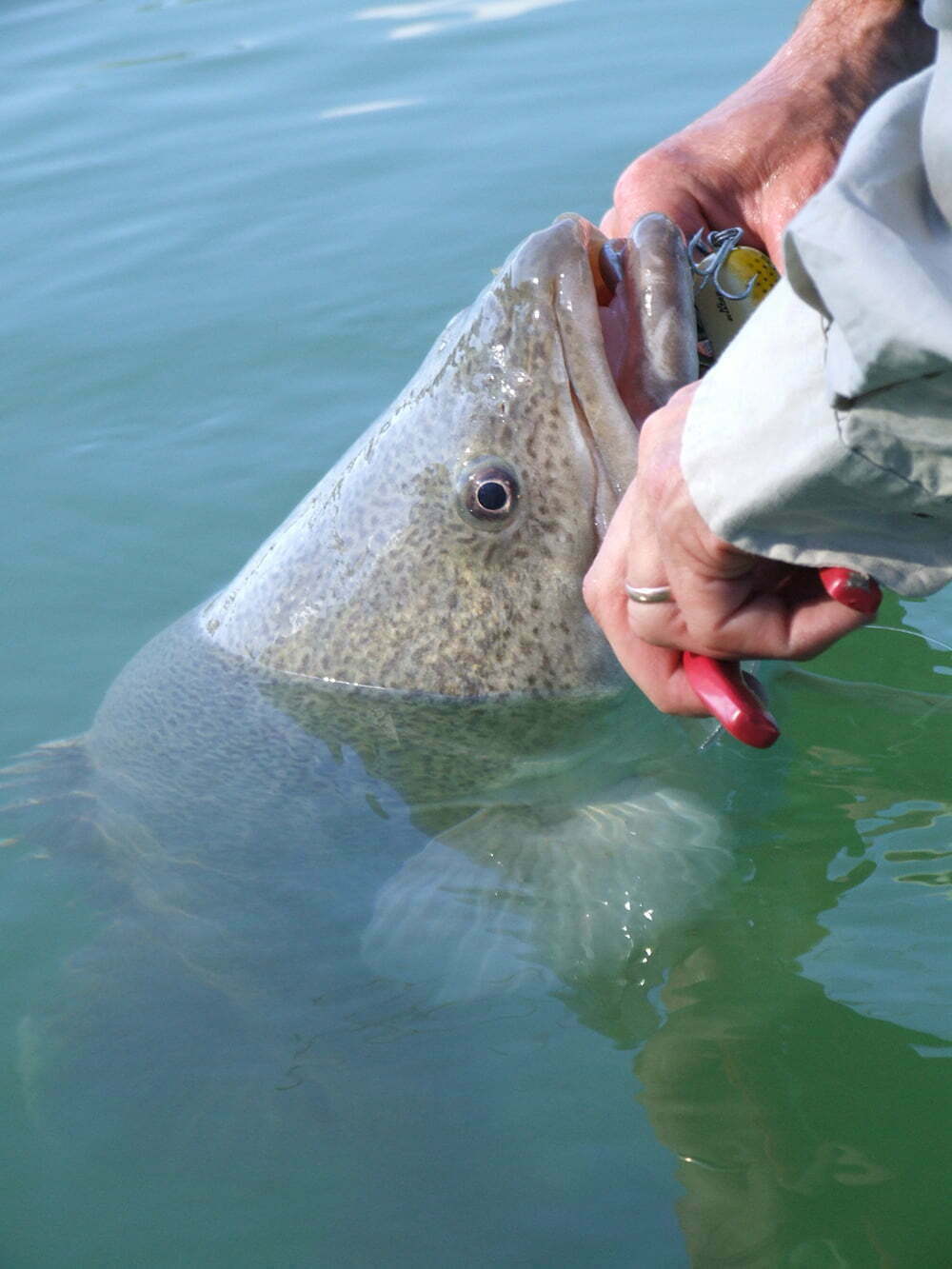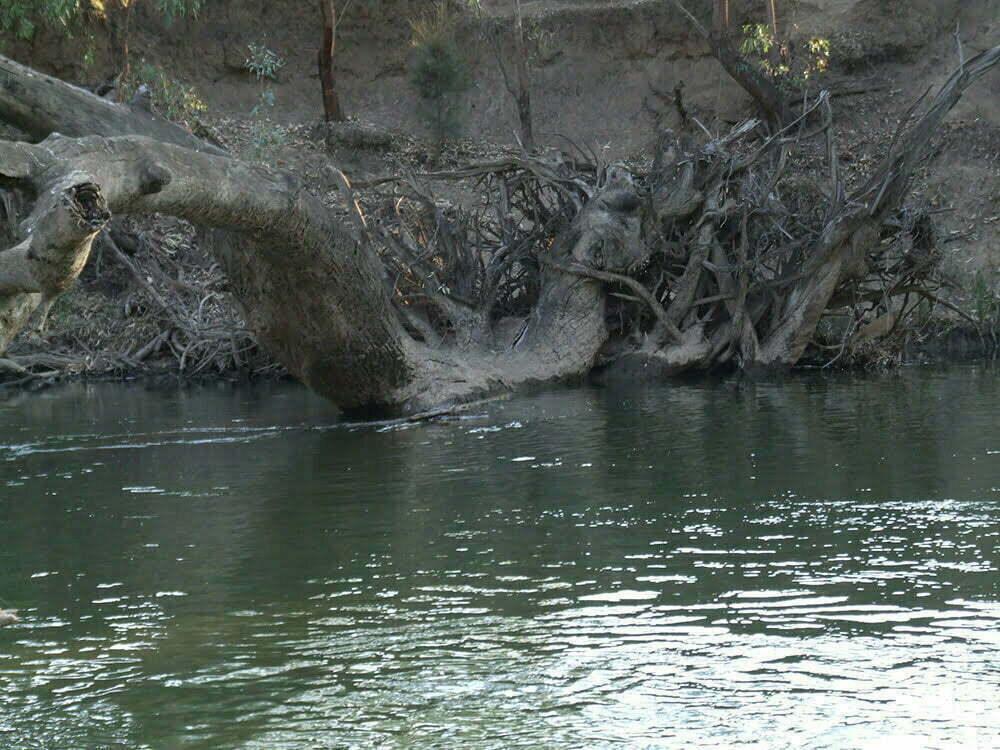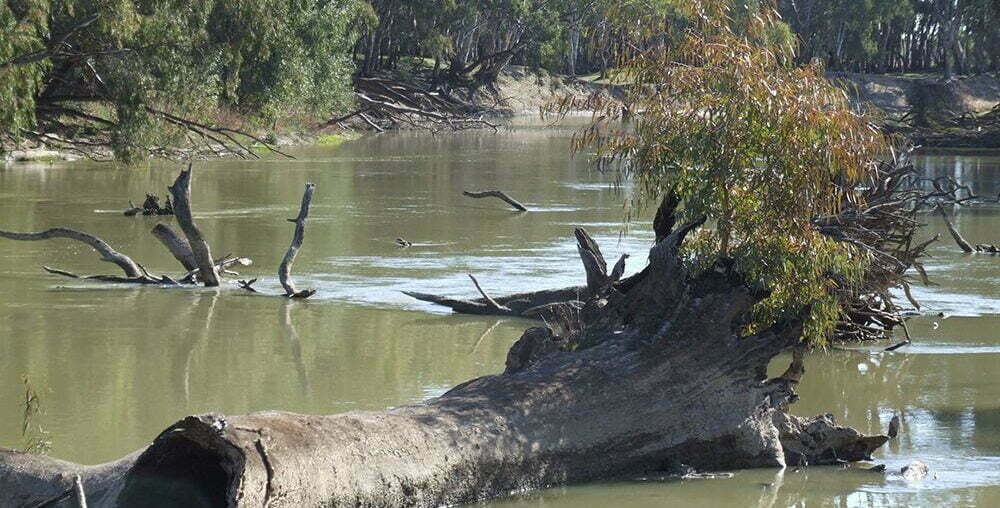Whilst fishing with mates I often hear the saying “if you don’t get snagged, you aren’t getting close enough”. Though usually muttered in explanation of a lure swinging off a piece of timber, I think this statement actually says a lot about the intimate appreciation that fishers have for the role of tree trunks, branches and root masses (collectively known as snags) in ensuring healthy fisheries, and exciting fishing opportunities.
This relationship is particularly well defined for species such as Murray cod which are known to often haunt a single snag for long periods of time, ambushing prey from its shadows, seeking refuge from flow and predators, and laying adhesive eggs on/in its woody surfaces around September-November. However some may be surprised to learn that snags are also important habitat for a suite of other species including tiny invertebrates, small fish species, as well as frogs and birds.
Given that snags are so ecologically important for the maintenance of the health of our rivers and fisheries, it is devastating to consider how much effort our forefathers expended over the last 150 years pulling them out of rivers to try and improve riverboat navigation, increase water flow, reduce erosion and protect infrastructure. More than 25,000 snags were removed from the Murray River between Lake Hume and Lake Mulwala alone in the 1970s and 1980s. Imagine the sort of fisheries we would have today if we knew then what we know now!
With the benefit of many years of research and learning, we now understand that the efforts of earlier generations to control erosion by removing snags from rivers were actually making the problem worse. Snags actually play an important role in protecting the riverbed and banks from erosion, as well as providing complexity for fish to hide and forage, creating variable flows, and introducing nutrients to our rivers as they slowly decompose.
Whilst many fishos intuitively know that snags are important for fish, what has been less well understood until recently is whether improving fisheries is a simple case of “just add snags”. Fortunately a project underway on the Murray is helping to deliver answers to this and other questions.
The project, which is the largest of its kind in Australia, has involved the introduction of thousands of trees cleared as part of road works to a stretch of the Murray River from Lake Hume and Lake Mulwala to improve fish habitat. In addition, scientific trials are underway to understand benefits of the re-snagging, and help inform future re-snagging of large lowland rivers. A key question that this project is looking to answer is whether re-snagging simply draws fish from other areas, creating a localised increase in fish abundance in that area (often called the ‘honeypot’ effect), or whether re-snagging actually “creates more fish”, prompting additional spawning and recruitment.

To answer this question, researchers are comparing fish communities in the re-snagged river reach to areas where no re-snagging has taken place. By conducting regular electrofishing surveys, monitoring recaptures of tagged fish and examining the behaviour of fish fitted with radio transmitters, the research team are able to detect changes in the size and movement of populations of a range of native fish species over time. The local fishing community are also assisting by recording where they fish, the species they catch and how many they land per hour (known as Catch Per Unit of Effort) as part of an angler logbook program.

Results so far indicate that native fish respond well to introduction of snags. Murray cod, Trout cod and Golden perch of all sizes started using the new snags within 12 months, particularly where snags were present in high densities. After six years of data collection, researchers have seen an increase in size of the Murray cod population within the re-snagged reach, however interestingly, to date no significant change has been observed for Trout cod, Golden perch or Silver perch.
Project leader, Jarod Lyon explains “the increase in Murray cod abundance that we have seen in the re-snagged area seems to be caused by a combination of factors. Fish in the re-snagged reach appear to be surviving better, and we have also seen some evidence of movement of fish into the re-snagged river reach from other areas. Importantly though, we have seen a higher level of recruitment in the re-snagged area as well, and some evidence that cod in the re-snagged reach may be growing faster compared to fish in one of the reaches that was not re-snagged”.

The local anglers are providing a vital piece to the puzzle by helping to answer the question of whether re-snagging improves fishing. There is a need for more data to confirm the trend they are seeing, however so far the results look encouraging. Jarod explains “The angling data that has been collected so far indicates Murray cod and Golden perch catches in 2011 were significantly higher in the re-snagged area compared to 2007, when re-snagging commenced”.
The project has also highlighted the importance of snag placement to maximise benefits for fish, and it turns out it’s a case of different strokes for different folks. For example, snags placed within 15 metres of the bank were found to be best for Murray cod, whereas Trout cod were found to respond well to snags placed in the middle of the river, as well as along the banks. Snags placed in low energy areas of the river were found to be utilised less compared to other areas.

Lessons learnt:
The results of this study so far indicate that re-snagging provides particular benefit for Murray cod, and fishers who love to chase them. However there seems to be a bit more to it than just dropping a few snags in and hoping for the best. Factors including where the snags are placed in the river, and type, size, quantity and orientation of snags all play a role in determining how fish will respond, and probably how much the fishing improves as well.
It is likely that this long-term project will continue to provide new discoveries as it continues, and we will be sure to keep readers up to date.
The program is a partnership between various agencies, including: the Murray-Darling Basin Authority, Department of Environment and Primary Industries, North-East Catchment Management Authority, Industry and Investment New South Wales and New South Wales Department of Water and Energy .
For more information contact Jarod Lyon on Jarod.Lyon@depi.vic.gov.au



